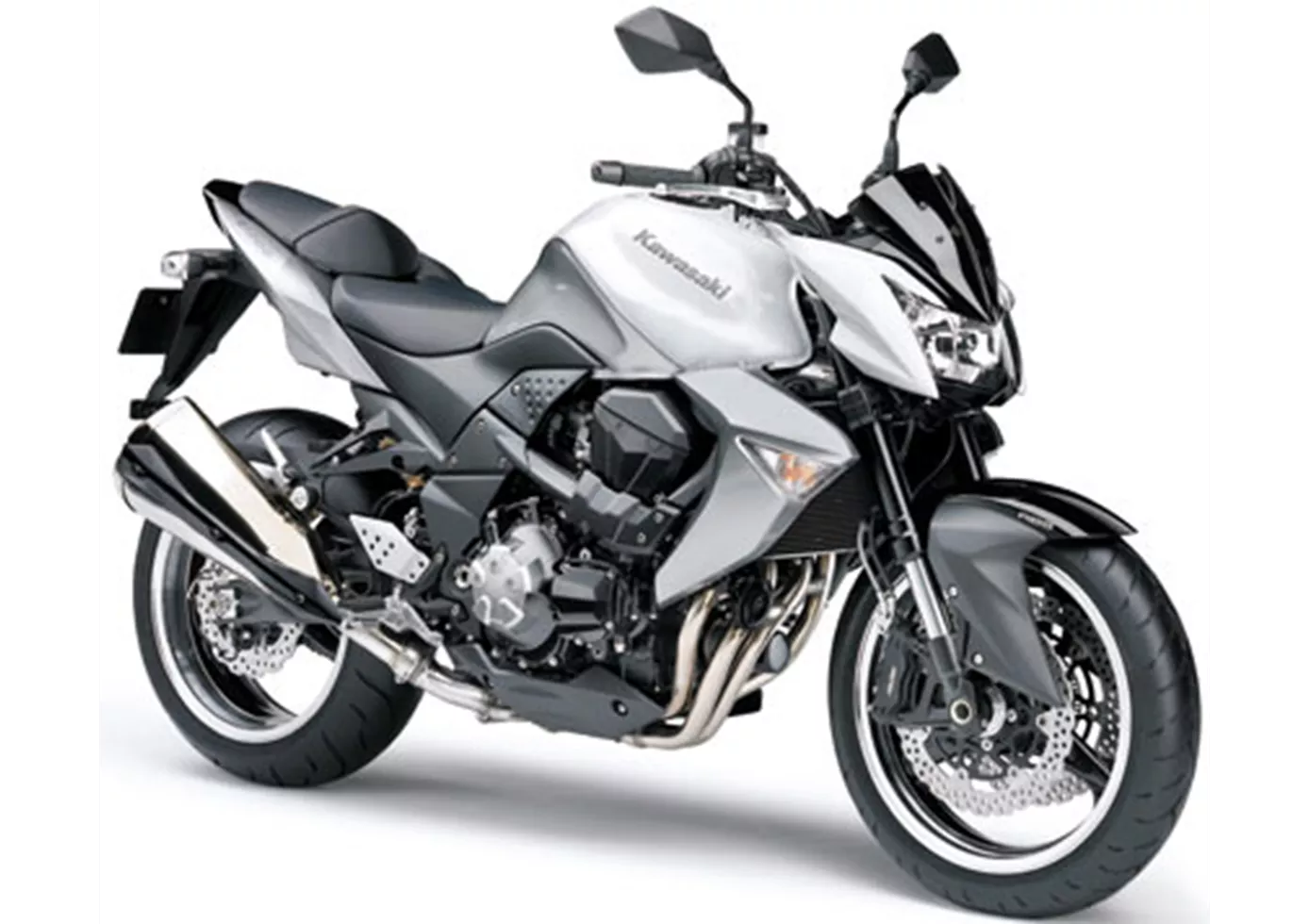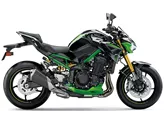Kawasaki Z1000 2009 vs. Kawasaki Z 800 2013

Kawasaki Z1000 2009

Kawasaki Z 800 2013
Vue d’ensemble - Kawasaki Z1000 2009 vs Kawasaki Z 800 2013
The Kawasaki Z1000 model year 2009 and the Kawasaki Z800 model year 2013 are both naked bikes with similar engine types, cooling systems, and braking technologies. However, there are some notable differences between the two models.
In terms of engine power, the Kawasaki Z1000 2009 has a higher output with 125 HP compared to the Kawasaki Z800 2013, which has 113 HP. This means that the Z1000 will provide a more powerful and exhilarating ride compared to the Z800.
Similarly, the Kawasaki Z1000 2009 has a higher torque of 98.7 Nm compared to the Z800's 83 Nm. This means that the Z1000 will offer better low-end power and acceleration, making it more suitable for aggressive riding.

Kawasaki Z1000 2009
Both models have four cylinders and liquid cooling systems, ensuring optimal engine performance and temperature regulation. They also have the same front and rear tire diameters of 17 inches, providing stability and grip on the road.
In terms of chassis, the Kawasaki Z1000 2009 has a steel frame with a central tube design, while the Z800 2013 has a steel frame with a double cradle design. The central tube design of the Z1000 provides better rigidity and stability, enhancing the bike's overall handling and maneuverability.
In terms of dimensions and weights, both models have the same wheelbase of 1445 mm, ensuring similar stability and agility. However, there are slight differences in seat height and kerb weight. The Z1000 has a seat height of 820 mm and a kerb weight of 228 kg, while the Z800 has a slightly higher seat height of 834 mm and a kerb weight of 229 kg. These differences may have a minimal impact on rider comfort and handling.
Another difference between the two models is the fuel tank capacity. The Z1000 has a larger fuel tank with a capacity of 18.5 liters, while the Z800 has a smaller tank with a capacity of 17 liters. This means that the Z1000 will have a longer range before needing to refuel.

Kawasaki Z 800 2013
In terms of strengths, the Kawasaki Z1000 2009 offers relatively much power, a powerful appearance, much comfort, an optimal chassis, and an acceptable price. On the other hand, the Kawasaki Z800 2013 has an eye-catching, chunky look, confident acceleration, relaxed geometry, and powerful brakes.
However, the Kawasaki Z1000 2009 does have some weaknesses, including an uncontrollable instrument unit and the presence of partial manual force. The Z800 2013, on the other hand, has a limited freedom of movement for the legs.
Overall, both the Kawasaki Z1000 2009 and the Kawasaki Z800 2013 are powerful and capable naked bikes. The Z1000 offers more power and comfort, while the Z800 has a more eye-catching design and confident acceleration. Ultimately, the choice between the two models will depend on the rider's preferences and priorities.
Caractéristiques techniques Kawasaki Z1000 2009 par rapport à Kawasaki Z 800 2013
Avantages et inconvénients en comparaison
Avantages et inconvénients en comparaison
Kawasaki Z1000 2009

Kawasaki a bien fait de repenser et de reconstruire la Z1000 de fond en comble. Elle a été dotée d'une âme sombre, dont les racines plongent dans le (dé)bon vieux temps, mais elle semble plus authentique et plus cohérente grâce à son développement autonome. Kawa a su se montrer à la hauteur de ses ambitions et des souhaits de ses clients. Dans l'ensemble, un produit audacieux pour des pilotes audacieux.
Kawasaki Z 800 2013

Dans l'ensemble, la Z800 a livré une performance sensationnelle. Compte tenu du fait que rien n'a été modifié ou optimisé sur le véhicule, à l'exception du pot d'échappement Remus, le résultat final est superbe.
Comparaison des prix Prix moyen du marché Kawasaki Z1000 vs Kawasaki Z 800
There are a few key differences between a Kawasaki Z1000 2009 and a Kawasaki Z 800 2013. In terms of price, the actual average price of a Kawasaki Z 800 2013 is about 18% higher. Compared to Kawasaki Z 800 2013 there are more Kawasaki Z1000 2009 bikes available on the 1000PS.de Marketplace, specifically 10 compared to 7. It takes less time to sell a Kawasaki Z 800 with 56 days compared to 63 days for the Kawasaki Z1000. Since model year 2005 1000PS.de editors have written 41 reviews for the Kawasaki Z1000 and 11 reviews for the Kawasaki Z 800 since model year 2013. The first review for the Kawasaki Z1000 was published on 9/2/2002 and now has more than 5,800 views. This compares to more than 8,100 views for the first review on Kawasaki Z 800 published on 9/6/2012.


















